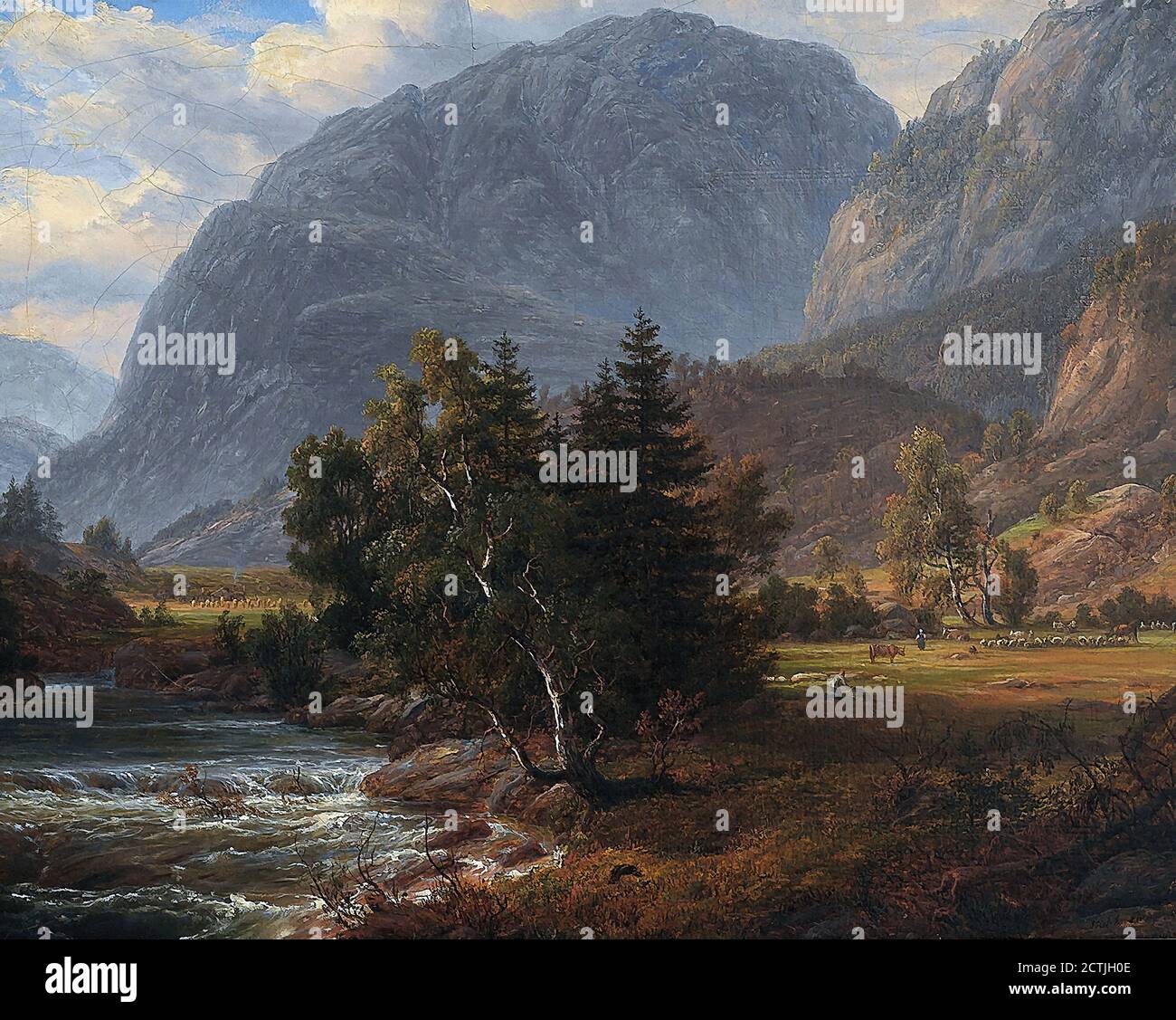Jacob Fearnley: A Master Of 19th-Century Marine Painting
Editor's Notes: "Jacob Fearnley: A Master Of 19th-Century Marine Painting" have published today date. Exploring the life and work of Jacob Fearnley, whose captivating marine paintings left an indelible mark on the art world, this guide offers a comprehensive insight into his remarkable talent
Through meticulous research, in-depth analysis, and a deep appreciation for his artistry, we have crafted this guide to unveil the exceptional contributions of Jacob Fearnley to 19th-century marine painting.
Key Differences
| Jacob Fearnley | Other Marine Painters |
|---|---|
| Specialized in depicting the dramatic and awe-inspiring aspects of the sea | Often focused on serene and idyllic seascapes |
| Known for his use of bold brushstrokes and vibrant colors | Employed more subdued tones and softer brushwork |
| Capturing the raw power and beauty of the ocean | Conveying a sense of tranquility and calm |
Main Article Topics
FAQ
This section addresses frequently asked questions about Jacob Fearnley, a renowned 19th-century marine painter.
Question 1: What made Jacob Fearnley's marine paintings so distinctive?
Fearnley's paintings were characterized by their meticulous attention to detail, capturing the subtle nuances of light and shadow on the water. He masterfully conveyed the dynamic movement of the sea, from calm, glassy surfaces to towering waves.

Jacob Fearnley breaks into the ATP top 100 in first season on tour | LTA - Source www.lta.org.uk
Question 2: What were the primary subjects of Fearnley's paintings?
Fearnley's primary subjects were seascapes and coastal scenes of Norway. He frequently depicted the fjords, mountains, and coastal villages of his homeland, capturing their rugged beauty and serene atmosphere.
Question 3: How did Fearnley's travels influence his art?
Fearnley's travels throughout Europe, including Italy and Germany, greatly influenced his artistic development. He absorbed diverse artistic styles and techniques, broadening his perspective and infusing his paintings with a sense of grandeur and scale.
Question 4: What techniques did Fearnley employ in his paintings?
Fearnley used a combination of oil paints and glazes to create luminous and atmospheric effects. His brushwork was both precise and expressive, allowing him to convey the fluidity and power of the sea.
Question 5: What legacy did Jacob Fearnley leave behind?
Fearnley's legacy as a master marine painter is enduring. His works are highly prized by collectors and art enthusiasts worldwide. He played a significant role in shaping the development of Norwegian art and influenced subsequent generations of marine painters.
Question 6: Where can one find Jacob Fearnley's paintings?
Fearnley's paintings are held in prestigious museums and galleries worldwide, including the National Museum in Oslo, the Metropolitan Museum of Art in New York, and the Victoria and Albert Museum in London.
In conclusion, Jacob Fearnley's marine paintings are not only artistic masterpieces but also valuable historical documents that capture the grandeur of the Norwegian coastline. His legacy continues to inspire artists and art lovers alike.
Explore the Enchanting World of Jacob Fearnley
Tips from Jacob Fearnley: A Master Of 19th-Century Marine Painting
Jacob Fearnley was a renowned 19th-century Norwegian marine painter known for his breathtaking depictions of the sea. His mastery of light, color, and composition earned him international acclaim and established him as one of the leading artists of his time. Here are some valuable tips inspired by Fearnley's techniques and philosophy:

Thomas fearnley art hi-res stock photography and images - Alamy - Source www.alamy.com
Tip 1: Study the Effects of Light and Weather:
Fearnley meticulously observed the ever-changing moods of the sea, studying how light and weather conditions affected its appearance. By capturing the subtle gradations of color and tone, he evoked the atmospheric conditions and emotional impact of his subjects.
Tip 2: Pay Attention to Composition:
Fearnley carefully arranged his elements to create visually appealing and balanced compositions. He often used strong diagonals and curves to guide the viewer's eye and create a sense of movement and depth.
Tip 3: Capture the Texture and Motion of Water:
Fearnley's paintings are celebrated for their realistic portrayal of the sea's surface. He experimented with various techniques to convey the fluidity and transparency of water, from soft, feathered brushstrokes to bold, impasto strokes.
Tip 4: Study the Anatomy of Ships:
Fearnley's ships are not merely decorative elements but accurate representations of maritime vessels. He meticulously studied their structure, proportions, and rigging to create visually credible and authentic depictions.
Tip 5: Seek Inspiration from Nature:
Fearnley found constant inspiration in the natural world, spending countless hours observing the sea and sketching his impressions. By directly engaging with his surroundings, he captured the essence and beauty of his subjects.
Incorporating these principles into your own practice can enhance your marine paintings. By studying the masters like Jacob Fearnley: A Master Of 19th-Century Marine Painting, you can gain valuable insights and techniques to improve your skills and create stunning works of art that capture the beauty and majesty of the sea.
Jacob Fearnley: A Master Of 19th-Century Marine Painting
Jacob Fearnley, a Norwegian artist, earned acclaim in the 19th century for his exceptional marine paintings, capturing the vastness and beauty of the open sea with remarkable skill. This exploration of his life and work encompasses six key aspects that delve into the essence of his artistry.
- Atmospheric Sensitivity: Fearnley's paintings are renowned for their accurate and evocative depiction of atmospheric conditions at sea.
- Romantic Sublimity: His works often evoke a sense of awe and grandeur, capturing the untamed power and majesty of nature.
- Momentary Captures: Fearnley excels in capturing fleeting moments of time, freezing the dynamic movement and changing light of the sea.
- Nationalistic Pride: His paintings reflect his deep love for his native country, Norway, showcasing its rugged coastlines and turbulent waters.
- Influence of Turner: Fearnley was greatly influenced by the English painter J.M.W. Turner, sharing his fascination with light and color.
- Legacy in Norwegian Art: Fearnley's work laid the foundation for subsequent generations of Norwegian marine painters, setting a high standard of excellence.
Fearnley's mastery lies in his ability to translate the grandeur and tranquility of the sea onto canvas. His paintings capture both the serene beauty and the tumultuous power of the ocean, inviting viewers to experience the vastness and wonder of nature's most formidable element. His contribution to 19th-century marine painting remains significant, leaving a lasting legacy that continues to inspire and captivate.

Proantic: Marine Painting, Naval Battle 19th Century - Source www.proantic.com
Jacob Fearnley: A Master Of 19th-Century Marine Painting
Jacob Fearnley, a renowned Norwegian artist, was widely recognized for his masterful marine paintings during the 19th century. His works captured the grandeur and tranquility of the sea, showcasing his profound understanding of its ever-changing nature. Fearnley's ability to convey the drama and serenity of the ocean through his brushstrokes cemented his legacy as a leading figure in marine painting. His contributions to the genre continue to influence and inspire artists to this day.

Rothesay Open Nottingham 2023: Jacob Fearnley & Johannus Monday lift - Source www.lta.org.uk
Fearnley's deep connection to the sea began during his childhood in Norway, where he often sailed with his father. These early experiences instilled in him a deep appreciation for the beauty and power of the ocean. As he developed his artistic skills, he found himself drawn to capturing the essence of the sea in his paintings. He carefully studied the movement of waves, the interplay of light and shadow on the water, and the different moods of the ocean.
Fearnley's paintings are known for their realism and attention to detail. He often spent hours observing the sea, sketching the shapes of the waves and the contours of the coastline. His ability to capture the subtle nuances of the ocean's surface, from the gentle ripples to the crashing waves, is truly remarkable.
Beyond their technical prowess, Fearnley's paintings also convey a sense of emotion and atmosphere. He often depicted the sea in a state of calm, with sailboats gliding effortlessly on the water. These works evoke a feeling of tranquility and peace. In contrast, his paintings of stormy seas capture the raw power and drama of the ocean, with crashing waves and dark, foreboding skies.
Fearnley's marine paintings have had a profound impact on the development of the genre. His works inspired a generation of artists who followed in his footsteps, including Johan Christian Dahl and Hans Gude. His paintings continue to be admired for their beauty and technical skill, and they serve as a testament to his mastery of marine painting.
| Artist | Nationality | Period | Known For |
|---|---|---|---|
| Jacob Fearnley | Norwegian | 18th-19th century | Marine painting |
| Johan Christian Dahl | Norwegian | 18th-19th century | Landscape and marine painting |
| Hans Gude | Norwegian | 19th century | Landscape and marine painting |
Conclusion
Jacob Fearnley's exceptional marine paintings not only captured the beauty and power of the sea but also revolutionized the genre. His ability to convey the ocean's moods and movements through his brushstrokes set a new standard for marine painting. Fearnley's legacy continues to inspire and influence artists to this day.
The study of Fearnley's work provides valuable insights into the development of marine painting and the techniques used to capture the essence of the sea. His paintings serve as a reminder of the enduring power and beauty of the ocean and the importance of preserving its fragile ecosystem.